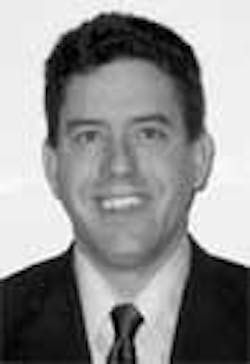Magical mystery tour
Energy efficiency, wastewater reuse, watershed approaches to sustainable resource management and regulatory frameworks are more than flights of fancy water industry events reveal.
Sometimes keeping up with all the events in our market can be a daunting challenge. One could easily be forever on the road.
Just to name a few October events where WWI was represented, WEFTEC.07 took place in San Diego, California, followed shortly thereafter by the International Water Conference (IWC) in Orlando, Florida; WATEC in Tel Aviv, Israel; ChemShow in New York; and IDA World Desalination Congress in Gran Canaria, Spain.
The first, the Water Environment Federation’s 80th annual convention enjoyed record-setting numbers with 19,929 attendees and 1,017 exhibitors using 268,405 net square feet of floor space – breaking previous highs in 2002 and 2006. I had a chance to attend the WEF Industrial Wastes Committee meeting, International Reception for Global Water Leaders, IFAT.08 preview event as well as luncheon events for Siemens Water Technologies and ITT Corp., not to mention numerous hospitality events and personal meetings.
At the Siemens luncheon, Roger Radke gave an overview of efforts supporting the company’s new theme, “The Power of Green”. Commenting on the difference with competing PR programs, he noted: “At GE, they talk about ecomagination. At Siemens, we talk about eco-reality.” Both spent the last decade amassing core strengths in water and wastewater treatment technologies, as has ITT.
At the ITT event, hosted by Gretchen McClain, new Fluid Technology Group president, and Bjorn von Euler, corporate communications director, we learned about ITT’s partnership with National Geographic to promote awareness of global water issues, including a documentary as part of its “Strange Days on Planet Earth” series, hosted by actor and environmental activist Edward Norton. Von Euler also discussed the inspiration of this year’s Jr. Stockholm Water Prize winners from Mexico whose project studied effectiveness of eggshells as a filtration medium. He served as a judge for the prize, which ITT sponsors.
At the IWC, we learned the once Pittsburgh, USA-only event will branch out to San Antonio, Texas, next year after its second year in Orlando, Florida, which enjoyed a 25% attendance jump from last year and a 10% jump from its first trip to DisneyWorld in 2005.
Reviewing WATEC, Francesca McCann, a financial analyst with the Stanford Group and columnist for WWI sister publication Industrial WaterWorld, noted: “Israel has been referred to as the ‘Silicon Valley of Water Technologies’. There are ~125 water-related start-ups. Additionally, in cleantech, there are ~150 energy-related and ~65 environmental technology start-ups. Venture money has been and will continue to pour into the water and cleantech sectors and many global technology developments spring from Israeli start-ups.” As for investment opportunities, she highlighted Amiad Filtration and IDE Technologies.
The biennial ChemShow played host to a Russian chemical industry delegation courtesy of the Mid-Atlantic Russia Business Council (MARBC), also touring facilities and enjoying receptions in Delaware and Philadelphia – where it met with executives of the Chemical Heritage Foundation and American Chemical Society.
The IDA event saw the ascendance of Lisa Henthorne, a CH2M Hill vice president and global desalination director, as president.
In addition to heading up the Colorado, USA-based engineering consultant’s most challenging desalination projects, she helped develop a research and training program for the Middle East Desalination Research Centre in Oman at the behest of the U.S. State Department.
On a related note, this issue enjoying significant coverage of water reuse, UV and membrane issues, the public comment period for the WHO draft guidance on “Desalination for Safe Water Supply” – released in July – came to a close at October’s end. As such, we have articles on lab analysis advances to ensure desalinated water meets potable standards, as well as desalination of brackish water for reuse in Australia.
Lastly, the UK’s Chartered Institution of Water & Environmental Management (CIWEM), summarizing its recent Global Environment conference, says: “If the water industry and its supporting organisations are to become more energy efficient and emit less carbon dioxide, a holistic catchment based approach is needed, with self monitoring, balanced risks and a closer, more mature relationship between regulators and the water industry”.
If only words like these could be put into action to reflect progress toward a more sustainable approach taking into account climate change issues and focus on balancing long term needs
everywhere.
Carlos David Mogollón,
Managing Editor

